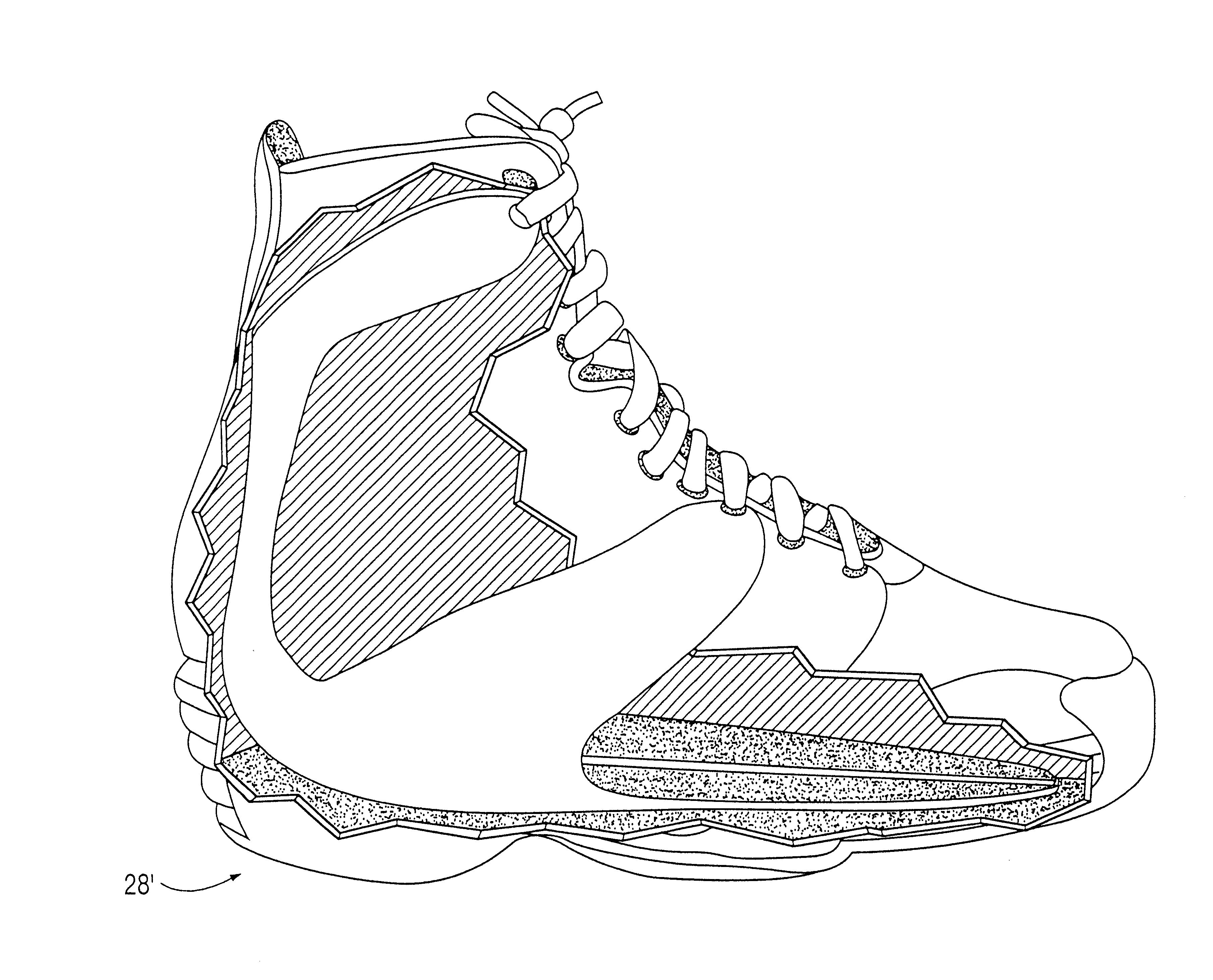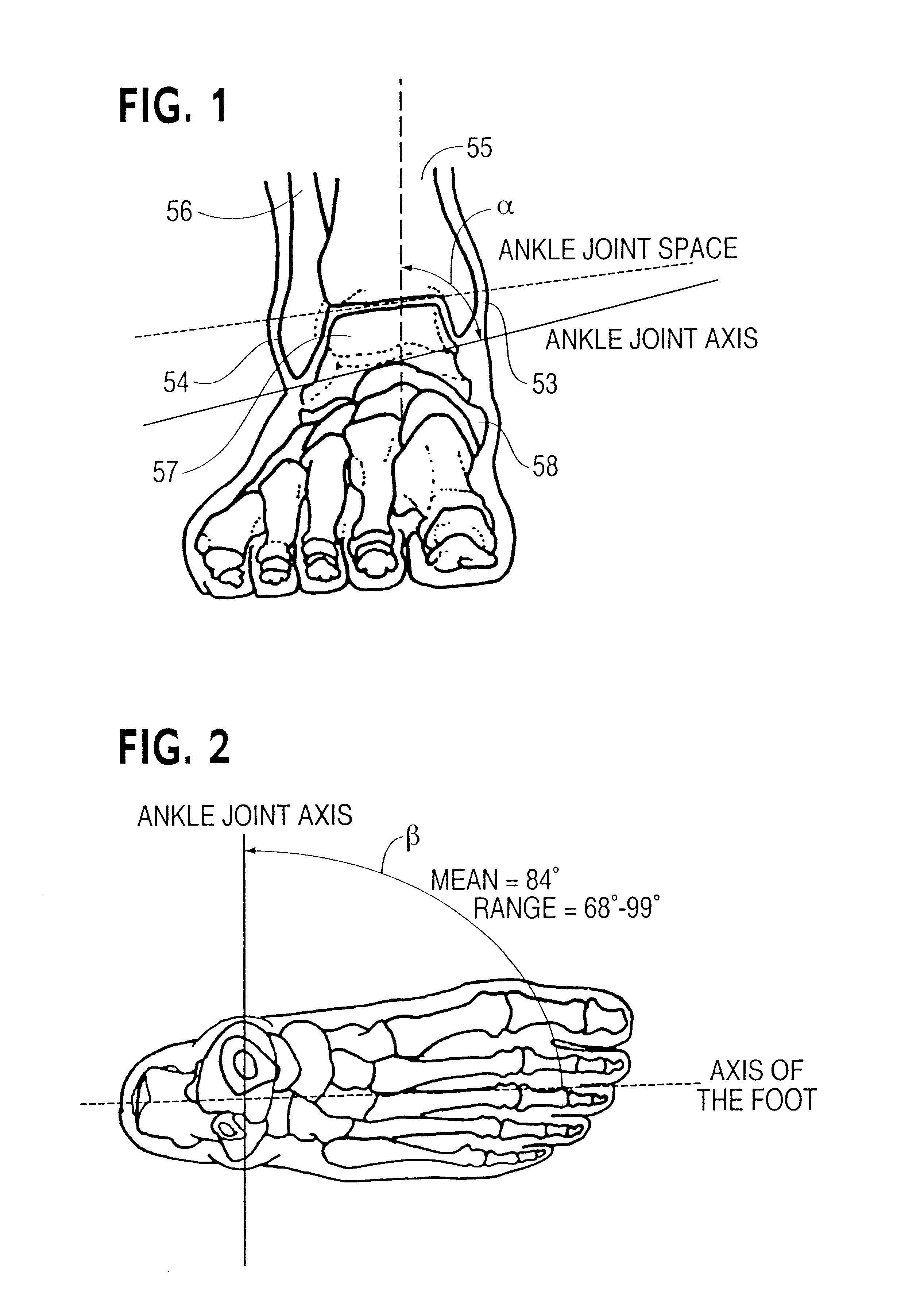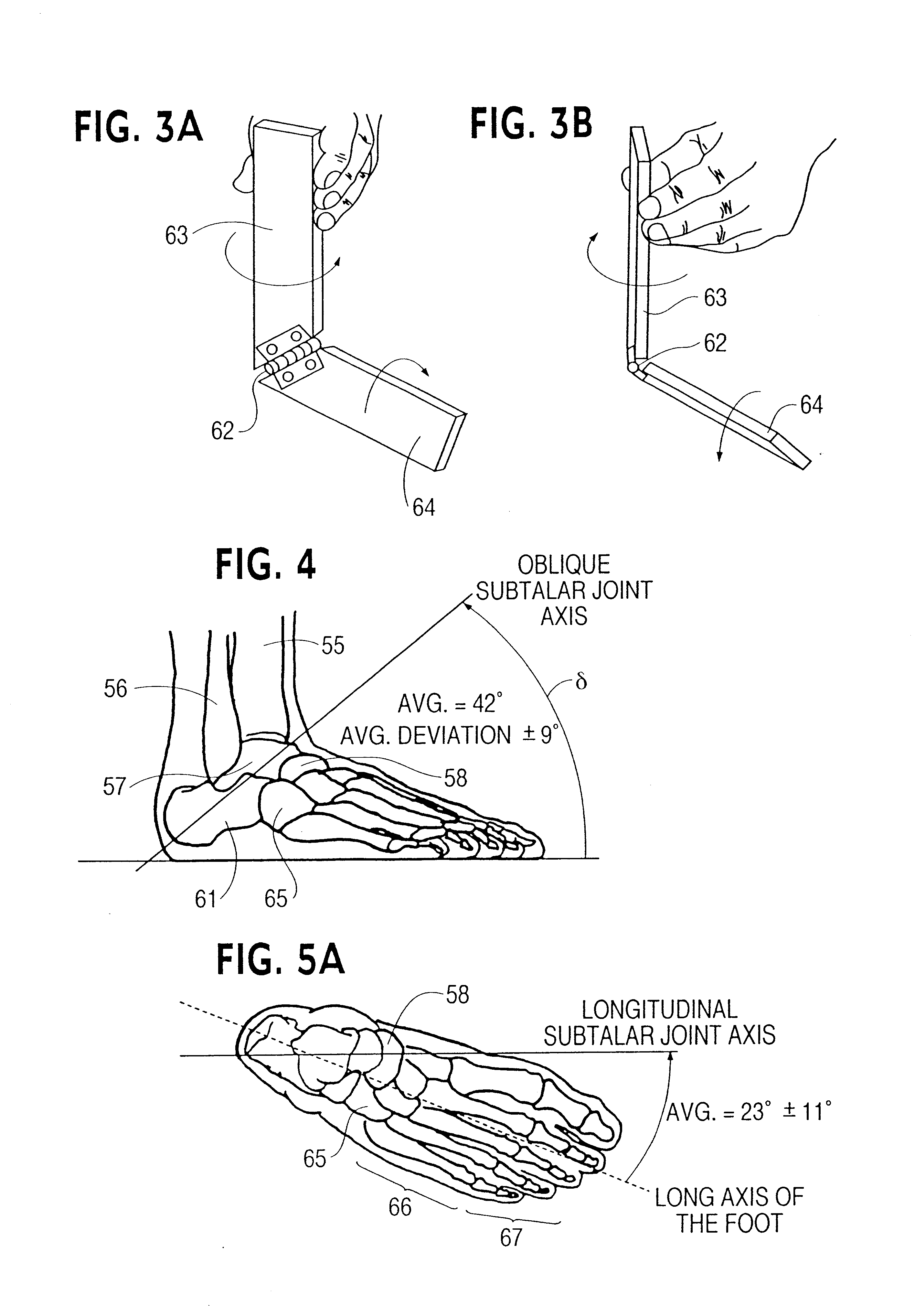Shoe, ankle orthosis and method for protecting the ankle
a technology of ankle and orthosis, applied in the field of shoes, ankle orthosis and ankle protection, can solve the problems of lateral malleolus vulsion and oblique or vertical fracture of the medial malleolus, orthoses and shoes in conjunction have not been effective in preventing or treating these injuries, etc., to achieve enhanced control and facilitate control
- Summary
- Abstract
- Description
- Claims
- Application Information
AI Technical Summary
Benefits of technology
Problems solved by technology
Method used
Image
Examples
Embodiment Construction
Referring now to the drawings, anatomical considerations and biomechanical principles are briefly discussed in connection with FIGS. 1-6F of the drawings to aid in understanding the improved shoe, orthosis and method for protecting the ankle of the present invention as disclosed herein. The bony configuration of the ankle joint provides inherent stability. Essentially it is a hinge joint capable of movement in the sagittal plane, e.g. permitting plantarflexion and dorsiflexion of the foot with slight transverse plane motion occurring as well. The mortise of the joint comprises on one side the distal end of the tibia 55, the internal (medial) malleolus 53, and on the other side the distal end of the fibula 56, the external (lateral) malleolus 54. The moving component projecting into the mortis is the talus 57, which fits very tightly.
The malleoli, which hug the sides of the talus, are of unequal length and shape. The medial malleolus 53 is a short, stubby pyramidal structure whose ti...
PUM
 Login to View More
Login to View More Abstract
Description
Claims
Application Information
 Login to View More
Login to View More - R&D
- Intellectual Property
- Life Sciences
- Materials
- Tech Scout
- Unparalleled Data Quality
- Higher Quality Content
- 60% Fewer Hallucinations
Browse by: Latest US Patents, China's latest patents, Technical Efficacy Thesaurus, Application Domain, Technology Topic, Popular Technical Reports.
© 2025 PatSnap. All rights reserved.Legal|Privacy policy|Modern Slavery Act Transparency Statement|Sitemap|About US| Contact US: help@patsnap.com



